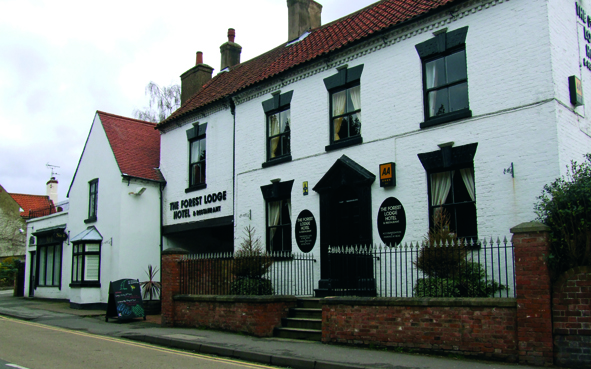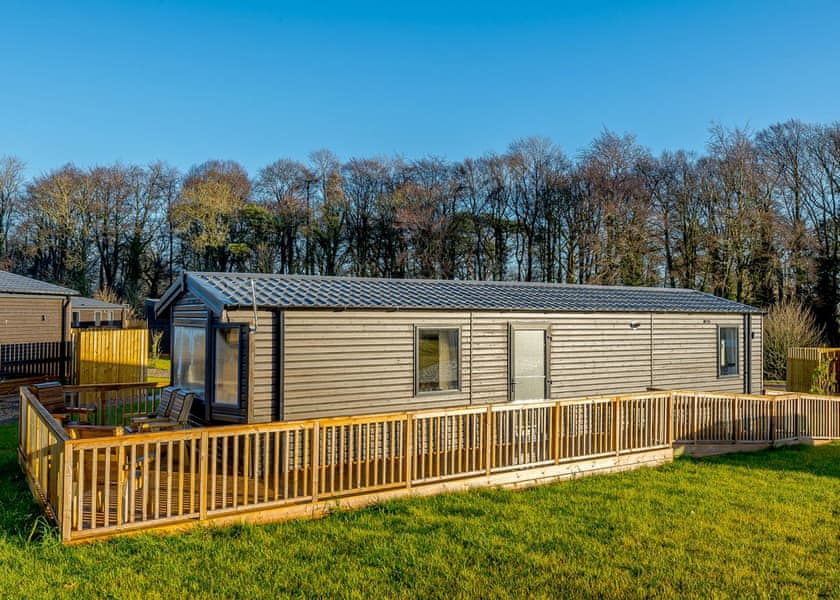Nestled amidst the rolling countryside and scenic woodland in the heart of Nottinghamshire, seek…
Clumber's country life

Nottinghamshire's Clumber Park provides an undemanding and enjoyable day out for all ages
3.75 miles (6kms)
About the walk
There are few more popular and scenic locations for a family day out in the East Midlands than Clumber Park, with walking and cycling routes aplenty. What is rather bizarre, however, is that the centrepiece of the original estate vanished many years ago.
The building of Clumber House didn't begin until the 18th century but, typical of the age, the Duke of Newcastle, who had been granted the right to enclose what was until then a part of Sherwood Forest, set about it in style. Gatehouses and follies sprang up, and the River Poulter was dammed to form a vast lake complete with boathouses and a classical bridge (although, it took 15 years and over £6,000 to build). A small chain ferry was installed to cross the lake, and a full-time sailor was even employed to crew a model naval frigate called The Lincoln, which resided on the water as a floating summer house until it caught fire and sank in the 1940s. The house was filled with rare books and paintings, while the park was planted with thousands of trees, including a 2-mile (3.2km) avenue of limes which, it is claimed, remains the longest in Europe.
However, after the death of the 7th Duke of Newcastle in 1928 the fortune of Clumber took a turn for the worse, and the exorbitant running costs of the huge house and estate forced its closure. The contents of the house were sold off at auction and the redundant building was demolished ten years later. During World War II the park was requisitioned for trials of new military equipment, and on one occasion Winston Churchill visited to view a new trench-digging machine known as the 'White Rabbit' (the scars on the land can still be seen).
Clumber saved for the nation
Happily for Clumber, the National Trust stepped in and negotiated to purchase the 3,800-acre (1,539ha) park as part of its Golden Jubilee celebrations in 1945. The land includes extensive tracts of grassland and heathland, in addition to the formal walkways and avenues. However, almost half of Clumber Park is taken up by woodland, with a wonderful array of mature beech, oak, chestnut and pine, as well as more exotic introductions. A tree nursery is also being developed to grow trees from seed collected in the park, and among the other visitor attractions is a walled kitchen garden, which apart from organically managed vegetable plots also features a palm house, vines and figs.
Although the house is long gone, the original stable blocks now serves as the information point, with adjacent tea rooms, and near by the Clumber Chapel, begun in 1868 and a wonderful example of extravagant Gothic Revival architecture, is still used three Sundays a month for services.
Walk directions
From the information point near the main car park, walk across the site of the former mansion and down to reach the lakeside. Turn right here along the clear path that runs along the shore through an area of patchy woodland. Continue to follow the path, which curves left, then right, all the way to Clumber Bridge.
Cross the bridge and turn left past the car park to resume the route by the shore. If the path by the water's edge below the trees is a little boggy, then switch to the wider and firmer track further back. As you draw opposite the site of the former house, there are paths off across the parkland to your right – a detailed map is available from the National Trust shop. At the far corner of the lake you eventually swing left on the embankment path. To your right you'll find an area of wetland created 20 years ago by mining subsidence, now a popular area for birding. Carry on past the toilet block at Hardwick until you reach the surfaced road beyond the car park.
Go left on to the road and in 50yds (46m) turn right, before the causeway begins, for a narrow, sandy path up through dense vegetation. Follow this twisting route through an area known as The Lings. The huge variety of trees here includes beech, sweet chestnut, silver birch, yew and pines. When you drop down and emerge into an open, flat area beyond the end of the lake, walk ahead to turn left on to a wide, curving gravel track.
In 100yds (91m) fork left on a narrow grassy path away from the shore. At the end turn left on to a wide track that crosses the road and continues past a wooden barrier into Ash Tree Hill Wood.
Go straight over a crossroads of tracks and on along this popular and direct route through the trees, ignoring an inviting right turn. When you emerge in open ground on the far side, continue ahead to the ornate gateway into the wooded Pleasure Ground ahead.
Go through this, and veer left on any one of the minor paths through the undergrowth to reach the main lakeside route. Turn right and follow this along Lincoln Terrace back to the start of the walk. A little beyond the lawned terrace a looping track to the right, across the carefully manicured lawns, leads you to the chapel and car park.
Additional information
Clear, level paths and tracks throughout, some steps
Landscaped parkland surrounding ornamental lake
Generally good, with off-lead areas
OS Explorer 270 Sherwood Forest
Main car park in Clumber Park (charge for non-National Trust members)
At car park, and half-way round near Hardwick village
WALKING IN SAFETY
Read our tips to look after yourself and the environment when following this walk.
Find out more
Also in the area
About the area
Discover Nottinghamshire
Most people associate Nottinghamshire in the East Midlands with the legend of Robin Hood, though the former royal hunting ground of Sherwood Forest has been somewhat tamed since Robin’s outlaw days. Traditionally, the county’s primary industry, alongside agriculture, was coal mining but it is also an oil producing area, and during World War II produced the only oil out of reach of the German U-Boats.
The county is divided between the old coalfields north of the city of Nottingham, the commuter belt of the Wolds to the south, Sherwood Forest and the great country estates known as the ‘Dukeries’. Towns of note are the river port and market town of Newark, which hosts major antiques fairs six times a year, and Southwell, known for the medieval minster with exquisite carvings of Sherwood Forest.
D H Lawrence was a Nottinghamshire man, born in Eastwood, the son of a miner and former schoolteacher. He grew up in poverty, and his book Sons and Lovers reflects the experiences of his early years. Other Nottinghamshire notables include Thomas Cranmer, the first Protestant Archbishop; Jesse Boot, founder of the Boots pharmaceutical company; Henry Ireton, the man who singed Charles I’s death warrant; and Olympic skaters Torvill and Dean.
Nearby stays
Restaurants and Pubs
Nearby experiences
Recommended things to do
Why choose Rated Trips?
Your trusted guide to rated places across the UK
The best coverage
Discover more than 15,000 professionally rated places to stay, eat and visit from across the UK and Ireland.
Quality assured
Choose a place to stay safe in the knowledge that it has been expertly assessed by trained assessors.
Plan your next trip
Search by location or the type of place you're visiting to find your next ideal holiday experience.
Travel inspiration
Read our articles, city guides and recommended things to do for inspiration. We're here to help you explore the UK.













